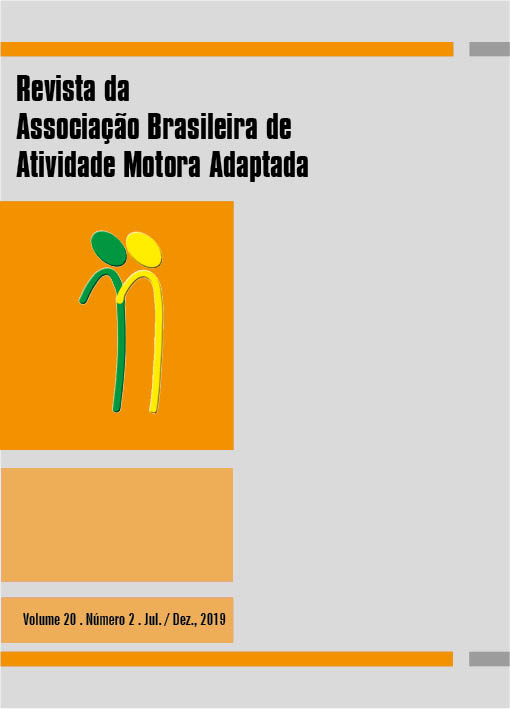Portugues
DOI:
https://doi.org/10.36311/2674-8681.2019.v20n2.02.p13Keywords:
paralisia cerebral, controle de tronco, membro superior, funcionalidade, remo indoor.Abstract
This study aimed to evaluate trunk control, sitting and handgrip strength of children and adolescents with Cerebral Palsy (CP) and characterized the movement of rowing. The study included children and adolescents aged 8 to 18 years, diagnosed with CP, GMFCS III and IV diparetic spastic type. The respective assessment instruments were used: for trunk control, the Segmental Assessment of Trunk Control (SATCo-Br); for the evaluation of sitting, the Gross Motor Function Measurement scale-66 (GMFM-66); and for the evaluation of the handgrip strength measurement we will use a dynamometer. Correlation analysis of right muscle strength (R) and movements during rowing revealed a moderate correlation between handgrip strength to R in individuals with diparetic spastic CP, regardless of GMFCS classification and knee extension during rowing action (r = -0.510; p = 0.044). There was no correlation between FPM R and other movements during the rowing action. The present study characterized the rowing movement in children and adolescents with CP classified in GMFCS III and IV. These data may be useful in directing and planning the clinical interventions of rowing practitioners with CP.
Received on: 11/10/2019
Accepted: 01/12/2019




